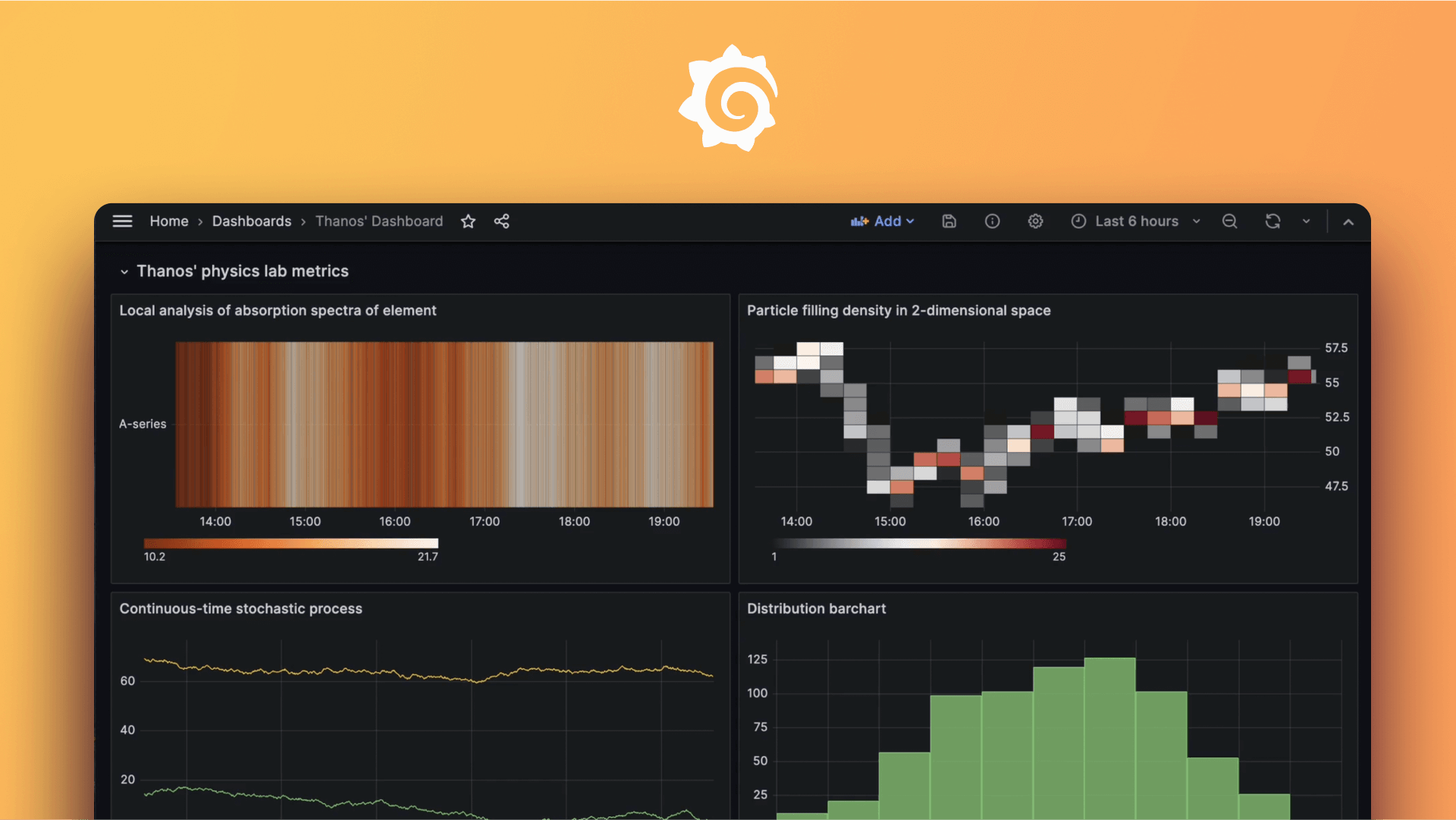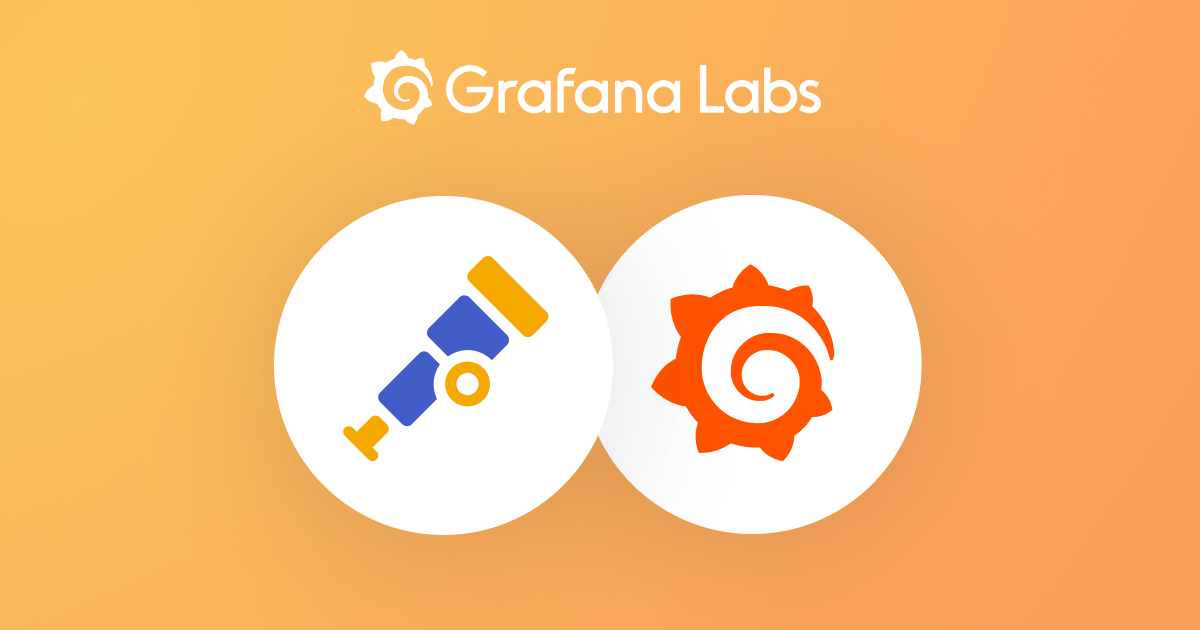Plugins 〉JSON Fetcher
JSON Fetcher
Grafana API Backend Datasource Plugin
- This is a Grafana Data Source Plugin for getting data from HTTP API
- User inputs in the query editor can be customized by setting JSON schema in the datasource configuration page
- Now end user can create queries in query editor without understanding JSON
- Alerts are also supported since it is a backend datasource plugin
Plugin installation
- Download the plugin from https://github.com/nagasudhirpulla/grafana-api-backend-datasource/releases/
- unzip and paste the folder in the data/plugins folder of Grafana installation
- Restart Grafana
- A data source by the name
JSON Fetchershould appear
Create JSON schema for query payload
- You can generate JSON schema from example query payload JSON here
Example JSON schema
- Paste the following in the Query schema text box of the json-backend datasource settings screen
{
"description": "Query Schema",
"properties": {
"fetchCached": {
"default": true,
"description": "Whether cached data fetching is ok",
"title": "Fetch Cached?",
"type": "boolean"
},
"measId": {
"default": "",
"description": "Measurement ID",
"maxLength": 20,
"minLength": 15,
"title": "Measurement ID",
"type": "string"
},
"samplingSecs": {
"default": 60,
"description": "Sampling Freq. in secs",
"multipleOf": 2,
"title": "Sampling Freq (in secs)",
"type": "integer"
},
"samplingType": {
"default": "snap",
"enum": [
"snap",
"average",
"max",
"min",
"sum"
],
"title": "Sampling Type",
"type": "string"
}
},
"title": "Query Editor GUI",
"type": "object"
}

- The grafana query editor for this datasource will look like the following

- It can be seen in the query inspector that the JSON payload is generated from user inputs and request is sent

End points to be implemented by the API
- The plugin requires these endpoints to be implemented by the API server
- API server should listen for GET requests at
/and return 200 OK status code as a health check endpoint implementation - API server should listen for POST requests at
/to respond to queries with data. The POST request body will contain the query information like series name, start and end timestamps, query payload etc. The response should have timestamps and values for a single series. - A sample API request that will sent to API server by grafana can be like
{
"RefID": "A",
"QueryType": "",
"MaxDataPoints": 974,
"Interval": 60000000000,
"TimeRange": {
"From": "2022-10-08T00:00:00+05:30",
"To": "2022-10-08T14:44:09.586+05:30"
},
"JSON": {
"refId": "A",
"alias": "abcd",
"payload": "{\"fetchCached\":true,\"measId\":\"abcd\",\"samplingType\":\"snap\",\"samplingSecs\":60}",
"bucketAggs": [
{
"field": "@timestamp",
"id": "2",
"settings": {
"interval": "auto"
},
"type": "date_histogram"
}
],
"datasource": "JSON Fetcher",
"datasourceId": 10,
"intervalMs": 60000,
"maxDataPoints": 974,
"metrics": [
{
"id": "1",
"type": "count"
}
],
"query": "",
"timeField": "@timestamp"
}
}
- A sample API response can be like
{
"frames":[
{
"columns":[
{"name": "@timestamp", "values": [1665216413748, 1665219977028], "labels": null},
{"name": "abcd", "values": [5, 10], "labels": null}
]
}
]
}
The times in response should be UNIX epoch timestamps in seconds
Data flow

Developer Documentation
Developer documentation can be found here
Grafana Cloud Free
- Free tier: Limited to 3 users
- Paid plans: $55 / user / month above included usage
- Access to all Enterprise Plugins
- Fully managed service (not available to self-manage)
Self-hosted Grafana Enterprise
- Access to all Enterprise plugins
- All Grafana Enterprise features
- Self-manage on your own infrastructure
Grafana Cloud Free
- Free tier: Limited to 3 users
- Paid plans: $55 / user / month above included usage
- Access to all Enterprise Plugins
- Fully managed service (not available to self-manage)
Self-hosted Grafana Enterprise
- Access to all Enterprise plugins
- All Grafana Enterprise features
- Self-manage on your own infrastructure
Grafana Cloud Free
- Free tier: Limited to 3 users
- Paid plans: $55 / user / month above included usage
- Access to all Enterprise Plugins
- Fully managed service (not available to self-manage)
Self-hosted Grafana Enterprise
- Access to all Enterprise plugins
- All Grafana Enterprise features
- Self-manage on your own infrastructure
Grafana Cloud Free
- Free tier: Limited to 3 users
- Paid plans: $55 / user / month above included usage
- Access to all Enterprise Plugins
- Fully managed service (not available to self-manage)
Self-hosted Grafana Enterprise
- Access to all Enterprise plugins
- All Grafana Enterprise features
- Self-manage on your own infrastructure
Grafana Cloud Free
- Free tier: Limited to 3 users
- Paid plans: $55 / user / month above included usage
- Access to all Enterprise Plugins
- Fully managed service (not available to self-manage)
Self-hosted Grafana Enterprise
- Access to all Enterprise plugins
- All Grafana Enterprise features
- Self-manage on your own infrastructure
Installing JSON Fetcher on Grafana Cloud:
Installing plugins on a Grafana Cloud instance is a one-click install; same with updates. Cool, right?
Note that it could take up to 1 minute to see the plugin show up in your Grafana.
Installing plugins on a Grafana Cloud instance is a one-click install; same with updates. Cool, right?
Note that it could take up to 1 minute to see the plugin show up in your Grafana.
Installing plugins on a Grafana Cloud instance is a one-click install; same with updates. Cool, right?
Note that it could take up to 1 minute to see the plugin show up in your Grafana.
Installing plugins on a Grafana Cloud instance is a one-click install; same with updates. Cool, right?
Note that it could take up to 1 minute to see the plugin show up in your Grafana.
Installing plugins on a Grafana Cloud instance is a one-click install; same with updates. Cool, right?
Note that it could take up to 1 minute to see the plugin show up in your Grafana.
Installing plugins on a Grafana Cloud instance is a one-click install; same with updates. Cool, right?
Note that it could take up to 1 minute to see the plugin show up in your Grafana.
Installing plugins on a Grafana Cloud instance is a one-click install; same with updates. Cool, right?
Note that it could take up to 1 minute to see the plugin show up in your Grafana.
For more information, visit the docs on plugin installation.
Installing on a local Grafana:
For local instances, plugins are installed and updated via a simple CLI command. Plugins are not updated automatically, however you will be notified when updates are available right within your Grafana.
1. Install the Data Source
Use the grafana-cli tool to install JSON Fetcher from the commandline:
grafana-cli plugins install The plugin will be installed into your grafana plugins directory; the default is /var/lib/grafana/plugins. More information on the cli tool.
Alternatively, you can manually download the .zip file for your architecture below and unpack it into your grafana plugins directory.
Alternatively, you can manually download the .zip file and unpack it into your grafana plugins directory.
2. Configure the Data Source
Accessed from the Grafana main menu, newly installed data sources can be added immediately within the Data Sources section.
Next, click the Add data source button in the upper right. The data source will be available for selection in the Type select box.
To see a list of installed data sources, click the Plugins item in the main menu. Both core data sources and installed data sources will appear.
Changelog
1.0.0 (Unreleased)
Initial release.






